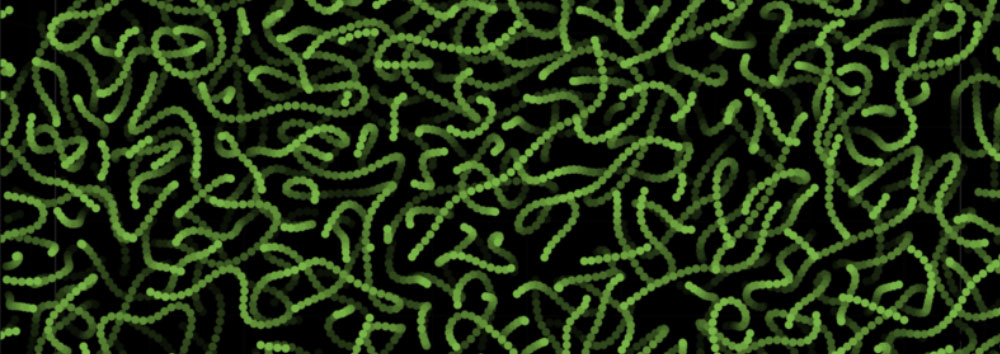From a humble plastic bag to ultra-light airplane wings – polymers are everywhere. These molecules are long chains of atoms that are chemically joined to play many roles that we all love (organic solar cells) and hate (indestructible plastic pollution). Polymers are useful in liquid form as well: the difference between tomato puree and ketchup is merely 0.5% of xanthan gum, which is a polymer made from sugar (see here). Ketchup is thick but not sticky, all thanks to the xanthan chains that are so long that they interpenetrate and form an entangled web which resists flow. The same principle also enables high tech applications like ink jet printing.
To decrease the amount of thickening additives, without compromising their effect on flow, we turn to branched polymers, rather than linear ones. The goal is to save costs and minimise the environmental impact of polymer-based products. To explain how it works, start with the concept of a random walk. Imagine you are on a hike and you play a game: toss a coin four times and take a step left for every ‘head’, and a step right for every ‘tail’. You will most often end up two steps away from the starting point. In fact, if we multiply the final distance by itself (2 x 2 = 4), it is equal to the number of random steps. This is the law of diffusion, and it governs the motion of small molecules like water.
For polymers, we have to take the random walk to higher dimensions. Imagine you are on a hike again, but this time you bring a hundred friends and for safety you all link up with a rope. Every member starts playing the random walk game, but the rope has some slack, so it takes a while for you to feel the pull of the entire team. This kind of motion is a random walk, embedded in another, slower random walk. Here you need to take 4 x 4 = 16 random steps to move a distance of two steps. Next, imagine hundreds of rope teams all mingled up so densely that you only have room to move up or down the line of your own team. The effect of the crowd brings us to 16 x 16 = 256 steps. Can you guess how many steps would you need if we add an extra branch to the middle of each rope team?
About ILL
The Institut Laue-Langevin (ILL) is an international research organisation that is a world leader in Neutron Science. Since its foundation in 1967, the Institute is a shining example of scientific cooperation. Presently 10 European countries (Spain, Switzerland, Austria, Italy, Czech Republic, Sweden, Belgium, Poland and Slovakia) ensure the necessary financial support for the ILL operation under the governance of 3 Associate Member countries: France, Germany and The United Kingdom. The research conducted at the ILL is dedicated to fundamental research (60%) as well as societal challenges research (40%). It covers a wide range of disciplines such as biology, (green) chemistry, materials science, condensed matter physics, as well as nuclear and particle physics.



